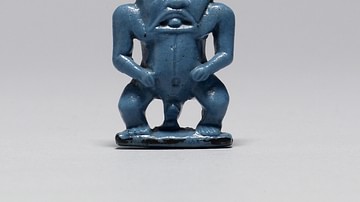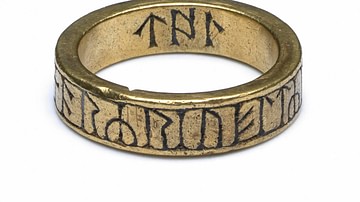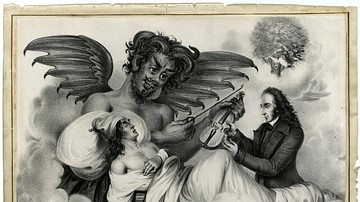Search
Did you mean: Magi?
Remove Ads
Advertisement
Summary 
Loading AI-generated summary based on World History Encyclopedia articles ...
Search Results

Article
Magic in Ancient Egypt
In ancient Egypt, if a woman were having difficulty conceiving a child, she might spend an evening in a Bes Chamber (also known as an incubation chamber) located within a temple. Bes was the god of childbirth, sexuality, fertility, among...

Article
Magic in Ancient Greece
For the Greeks magic (mageia or goeteia) was a wide-ranging topic which involved spells and evil prayers (epoidai), curse tablets (katadesmoi), enhancing drugs and deadly poisons (pharmaka), amulets (periapta) and powerful love potions (philtra...

Article
Magic Rings in Norse Mythology
Elements of Norse mythology abound in The Lord of the Rings, and none is so compelling as the ring itself. The One Ring is reminiscent of magic rings in Norse lore, especially Odin's Draupnir or Andvaranaut from the legend of the Volsungs...

Collection
Magic & Medicine in Ancient Egypt
Magic and medicine in ancient Egypt were understood as gifts from the god Heka, who presided over both, and were used together – or interchangeably – by medical professionals in treating patients. 'Magic' was recognized as the act of drawing...

Video
Magic and Medicine: The casebooks of history's most notorious astrologer doctors
A ten-year project to study and digitise some 80,000 cases recorded by two famous astrological physicians has opened a wormhole into the everyday worries and desires of people who lived 400 years ago.

Video
Magic Runes and Racial Identity
In this talk I present some considerations about the use of runes in Norse sources and draw attention to how they were instrumental in occult and nationalist circles in the 19th century up to Nazi ideology. Hope you find it entertaining...

Image
The Magic Violin
Il Violino Magico, 'the magic violin', featuring violinist and composer Niccolò Paganini on a bed of clouds, being presented with a violin by the devil, lithograph on paper, by James Anthony Minasi, 1831.

Video
Viking Witches and Norse Magic
A presentation on some aspects of Norse religion such as the importance of sorcery, its meanings and practitioners, as well as the role of gender. Important terms in the "lesson": seiðr - sorcery seiðmaðr - sorcerer seiðkona - sorceress...

Video
Hecate the Goddess of Witchcraft and Magic in Greek Mythology
Hecate is the goddess associated with magic, witchcraft, the moon, doorways, the night, necromancy, and ghosts in Greek mythology. She is the goddess of boundaries, the guardian of crossroads and the protector of athletes, warriors, horsemen...

Definition
Heka
Heka is the god of magic and medicine in ancient Egypt and is also the personification of magic itself. He is probably the most important god in Egyptian mythology but is often overlooked because his presence was so pervasive as to make him...